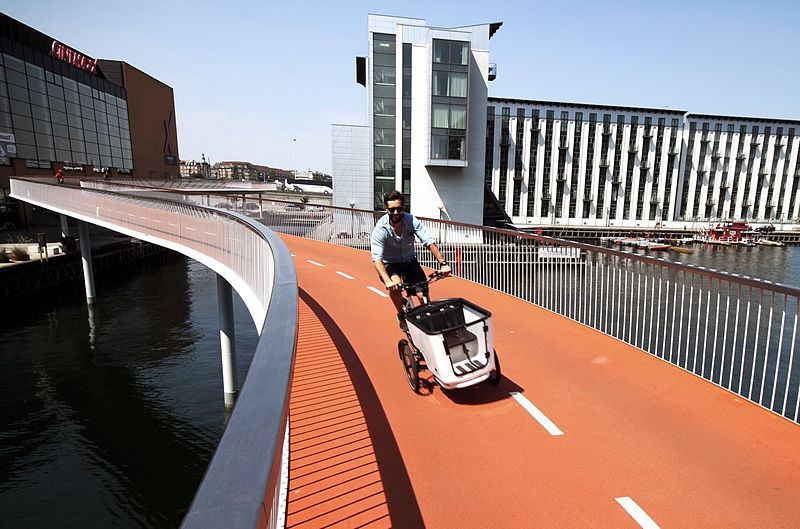A record number of cyclists have used Copenhagen’s cycling bridge ‘Cykelslangen’ (the bicycle snake) this year, according to the latest traffic counts that were taken on a week day in September.
The two-lane elevated orange bridge was used by 20,700 cyclists on that day – a whopping 37 percent increase over 2015, and more than double compared to what was expected when the bridge was built at the Fisketorvet shopping centre.
Similarly, the number of cyclists taking a journey over the connecting Bryggebro has increased by 40 percent to 23,800 compared to 16,900 in 2015.
READ MORE: Finally: Copenhagen bridge no longer a bridge too far
New harbour bridge on the way
Meanwhile, some 17,300 two-wheelers pedalled over the capital’s latest cycle bridge ‘Inderhavnsbro’ (inner harbour bridge) that connects Nyhavn with Christianshavn.
Copenhagen is now planning the construction of yet another cycle bridge across the harbour that would ease bicycle traffic on Langebro, which is daily being used by about 40,000 cyclists.
The new bridge will be 250 metres long and 10 metres wide. It will be situated parallel to Langebro and connect Amager Boulaverd with Christians Brygge.
When finished in 2018, it is expected to be used by 5,000-9,000 cyclists and 500-900 pedestrians daily.
READ MORE: US minister to take in Danish cycling culture
Funds for national cycle routes
In other related news: the Danish Parliament last week pledged to allocate 8 million kroner to the improvement of national cycle routes.
The funds will be used on quality-check of half of the national cycling route network and on signposting of the new Baltic Sea route number 8 that is over 800 km long and runs across 17 municipalities.
“I hope the new route – which, among others, takes Danish and foreign bicycle tourists along Møns Klint, Nakskov Fjord, Koldinghus and Christiansfeld, will become a cycle route of an international class and attract even more bicycle tourism to Denmark,” said the transport and housing minister, Ole Birk Olesen.














